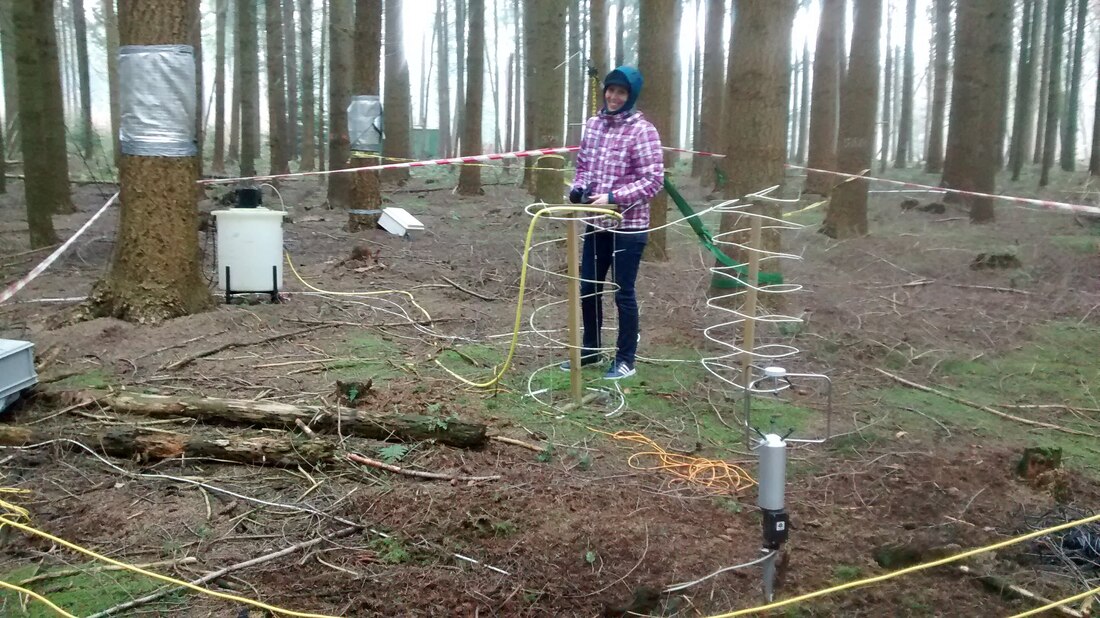As a water engineer, I am trained to shape the world: design irrigation systems, decide upon pumping capacities for draining the land, or (re)design polder systems. However, the world where these interventions take place is not static. Under climate and land use change, water always finds new pathways, where vegetation plays a major role. Vegetation controls how much and where water enters the soil, it consumes water for plant growth affecting our climate, and provides friction for water flow. Hence vegetation is key in our hydrological cycle and cannot be seen separately, as such the term ecohydrology is a sort of pleonasm. I realize that ecohydrology is much broader than I define here, but for me it is the role of vegetation in our water world.
What are your undergraduate and graduate degrees in?
I have a BSc and MSc degree in Civil Engineering from Delft University of Technology, where I specialized as hydrologist. After my Masters I did my PhD-study on the role interception in the hydrological cycle at research institute LIST in Luxembourg with TU Delft as awarding university.
How did you arrive at working in/thinking about ecohydrology?
In the Netherlands, we are raised with the high awareness for flooding. Maybe due to this, we falsely tend to think that all precipitation ends up in the river. So, during my studies, I was really astonished by the power of evaporation and the limited knowledge on this important hydrological process. Therefore, I decided to focus my research around the topic of evaporation. Once we better know how evaporation behaves, we can really improve water resources management including flood and drought predictions. Additionally, the cool thing about evaporation is that links the land with the atmosphere in such way that eventually also our weather forecasts can be improved. So, for the future I dream about no more drowned field work activities!
What do you see as an important emerging area of ecohydrology?
I think in the past many researchers in the field of ecohydrology tried to study plants and soils at the small scale. From these studies we learned a lot about the water behavior of plants; however, these laws often limitedly work on the larger scale. On the other hand, remotely sensed information is able to capture the larger scale, but is difficult to downscale. Therefore, observation techniques that are somehow in between these two scales would help us to understand how small-scale processes evolve into large-scale behavior. Luckily, more and more new observation techniques arise (e.g., stable water isotopes, thermal infrared imagery, distributed temperature sensing, drone technology) and also the sensor development itself becomes easier, which enables researchers to make tailor-made instruments themselves. Especially, the latter facilitates unique insights in the field of ecohydrology.
Do you have a favorite ecohydrology paper? Describe/explain.
One of the papers I really appreciate is the work of Renée Brooks et al (2009) entitled “Ecohydrologic separation of water between trees and streams in a Mediterranean climate”. They introduced a new theory on where trees get their water from and challenged the long-standing assumption that all infiltrated water is affected by evaporation or root water uptake. Whether it is true or not, these new out-of-the box theories help to fresh up our minds and avoid possible tunnel visions. In my view, it is good to -now and then- challenge existing ‘set-in-stone’ theories. Additionally, I very much liked the book “Precipitation partitioning by vegetation” edited by John van Stan, Ethan Gutmann and Jan Friesen (2020). Apart from being a very comprehensive compilation of all the past and possible future partitioning work, it has awesome graphics. It is really fun to read and sets a standard for future textbooks.
What do you do for fun (apart from ecohydrology)?
Apart from ecohydrology?!? Ehhh… annoy my cats with a laser pen? Yeah... that’s fun too.

 RSS Feed
RSS Feed